- News
- Reviews
- Bikes
- Accessories
- Accessories - misc
- Computer mounts
- Bags
- Bar ends
- Bike bags & cases
- Bottle cages
- Bottles
- Cameras
- Car racks
- Child seats
- Computers
- Glasses
- GPS units
- Helmets
- Lights - front
- Lights - rear
- Lights - sets
- Locks
- Mirrors
- Mudguards
- Racks
- Pumps & CO2 inflators
- Puncture kits
- Reflectives
- Smart watches
- Stands and racks
- Trailers
- Clothing
- Components
- Bar tape & grips
- Bottom brackets
- Brake & gear cables
- Brake & STI levers
- Brake pads & spares
- Brakes
- Cassettes & freewheels
- Chains
- Chainsets & chainrings
- Derailleurs - front
- Derailleurs - rear
- Forks
- Gear levers & shifters
- Groupsets
- Handlebars & extensions
- Headsets
- Hubs
- Inner tubes
- Pedals
- Quick releases & skewers
- Saddles
- Seatposts
- Stems
- Wheels
- Tyres
- Health, fitness and nutrition
- Tools and workshop
- Miscellaneous
- Tubeless valves
- Buyers Guides
- Features
- Forum
- Recommends
- Podcast
news
“If we must have more trams, let them take space from cars”: Cyclists “horrified” at plans to replace bike path with new tram line; Paris votes to triple SUV parking fees; Štybar “shed tears” during final home worlds; Bikeayo Saka + more on the live blog
SUMMARY
No Live Blog item found.
 Edinburgh Trams.jpg
Edinburgh Trams.jpg05 February 2024, 09:08
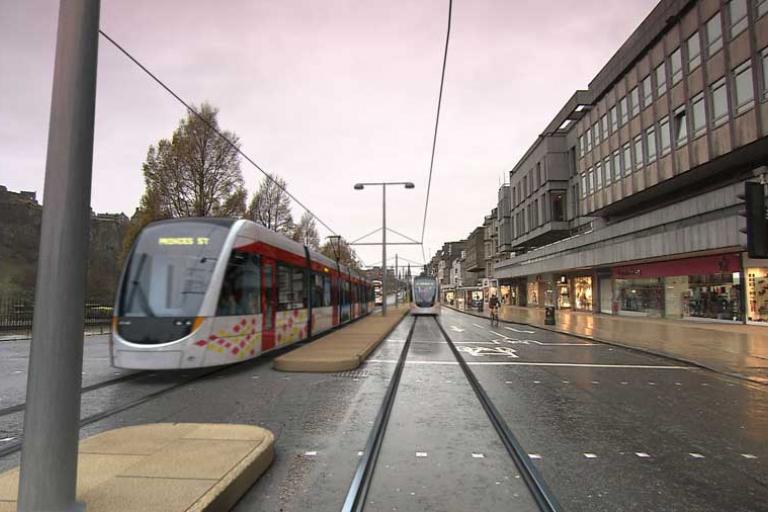
“If we must have more trams, let them take space from cars”: Cyclists “horrified” at plans to replace bike path with new tram line – as council says proposals will be put to public “objectively”
Cyclists in Edinburgh have again criticised plans to remove a 2km-long section of a popular active travel path in favour of a new “transformational” tram line – arguing that “less car use is the goal”, not the destruction of green, cycling space – after councillors voted to put two potential options for the tram route to consultation, while stressing that the proposals will be presented to the public “objectively”.
Last week, we reported that councillors were considering a recommended £2bn north-south tram line through Edinburgh city centre from Granton to the BioQuarter, which would extend the existing network between Newhaven and Edinburgh Airport and finally incorporate a line first planned around two decades ago during the city’s initial tram project.
Since then, the Roseburn cycle path has established itself as a popular active travel corridor in the city, with the council last year beginning work on a £12.5 million scheme to improve connections for cyclists between the path and the Union Canal.
However, the recommended proposal for the new tram route involves removing two kilometres from the cycle path and incorporating it into the tram network (a walking route will still co-exist alongside the tram line, but cyclists will be “discouraged” from using it), a design that has sparked a backlash from cycling and active travel campaigners in the city and prompted the Liberal Democrats to launch a ‘Save the Telford/Roseburn path’ petition.
A second, alternative route, known as the Orchard Brae Corridor, has also been touted, though councillors have noted that this second option’s drawbacks also include the possible removal of existing cycling infrastructure and limited opportunity to build new protected bike lanes.
> “Travesty” if tram extension plan leads to loss of “much-loved” cycle path, says councillor
On Thursday, while approving the start of a 12-week public consultation on the proposals, the City of Edinburgh Council noted that while the Roseburn route is the “preferred” design for the new tram line, the consultation “should present objectively the pros and cons of both routes”.
Daisy Narayanan, head of placemaking and mobility for the council, told the meeting that the Roseburn and Orchard Brae routes were “not equal options in any shape or form” and that the decision to recommend Roseburn as the ‘preferred’ option came after extensive discussions between officials.
She added that Roseburn Path would “no longer” be “a key cycle route”, and said that while bikes would not be “banned” once the new line was completed, the path would “not provide the same level of cycling experience as it does now”, due to an abundance of “pinch points”.
Nigel Bagshaw, a former Edinburgh Green Party councillor who now represents sustainable transport charity Transform Scotland, also agreed that the Roseburn option “provides greater flexibility as it will facilitate interchange with the public transport network at Haymarket”.
However, he also conceded that the partial loss of the Roseburn corridor as an active travel route “is a concern”.
“As an organisation we would strongly support the plans to review whether there is any prospect for retaining walking and cycling provision along the Roseburn Corridor,” he said.
> Zig-zag corners on “moronic” Edinburgh cycleway to be replaced to improve cycle safety
Meanwhile, Lib Dem councillor Hal Osler told the meeting that she had received a “wave” of emails from residents who were “horrified” at the possibility of losing a “precious linear park green corridor”, especially considering the presence of an alternative option.
And Jakob Assarsson, speaking behalf of Friends of Dalry Cemetery, called into question the council’s commitment to reducing car use in Edinburgh, pointing out that the tram line proposals only seemed to impact cycling and green space, and were based purely on financial concerns.
Trams, he said, “should not come at the expense of an existing world-class nature corridor – with bats, hedgehogs, owls, and badgers, all protected species, throughout – and an extremely popular active travel route.
“If we must have more trams, let them take space from cars. Less car use is the goal.
“Clearly the Roseburn option is preferred because it is anticipated to be less expensive. But only in monetary terms. Not in terms of the quality of the city, the physical and mental health of its inhabitants, and the wellbeing of its nature.”
With the construction process expected to take 11 years, I suspect this debate could rumble on for a while yet…
05 February 2024, 11:54
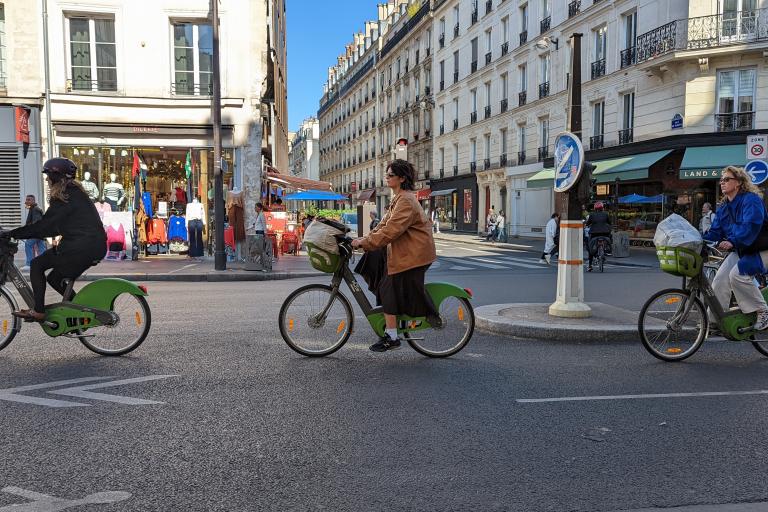
“Do you really need a SUV? I carry my son on a bike, we found solutions”: Parisians vote to triple parking fees for SUVs, with charges for “bulky, polluting” cars set to rise to £15 an hour in central Paris
Paris’ cycling and active travel revolution shows no signs of slowing down, as voters in the French capital agreed to a threefold increase in parking charges for “bulky, polluting” SUVs.
In yesterday’s referendum, 54.5 per cent of voters approved the proposals, which are designed to target motorists who drive into central Paris from the suburbs and will see parking charges for vehicles of 1.6 tonnes or more, and electric vehicles heavier than two tonnes, triple to €18 (around £15.40) an hour.
Exemptions will be made, however, for taxi drivers, health workers, and people with disabilities.
“We’re proud of having posed an eminently environmental question at a time the environment is presented as the source of all evil,” Paris Mayor Anne Hidalgo, who has overseen the creation of 84km of cycle lanes in Paris and a 71 per cent rise in cycling since the end of the Covid-19 lockdowns, said after the results were confirmed.
“It’s a form of resistance here in Paris to this very concerning movement.”
Meanwhile, 27-year-old voter Juliette Bruley told Reuters: "Do you really need a SUV in Paris? I carry my son on a bike, we found solutions.”
And speaking to Forbes, Leo Murray, co-director of climate charity Possible, described the “landmark referendum” as the “latest triumph in Paris’ ongoing mission to tackle its problems with air pollution, congestion and motor traffic dominance, and is likely to inspire cities around the world to follow suit.”
He continued: “It is fantastic to see the people of Paris voting to increase parking charges for large and oversized cars. It is a great first step in reversing the recent trend towards autobesity and reducing our overall reliance on cars in cities.”
> Paris to become '100 per cent cycling city' within next four years
However, others aren’t as impressed by the new, increased charges.
“It’s going to be about 200 euros a day. That’s extremely expensive. Life is expensive, children are expensive,” 37-year-old voter Laure Picard said.
“The goal is that we stop using our car, but we need our car to leave Paris during holidays and weekends.”
“We must firmly oppose these attacks on freedom pursued under false green pretexts,” the pro-motoring lobby group ‘40 millions d’automobilistes’ said after the result was announced.
“If we don’t stop it now, this unjustified rebellion led by an ultra-urban and anti-car minority will spread like gangrene to other cities.”
05 February 2024, 17:09
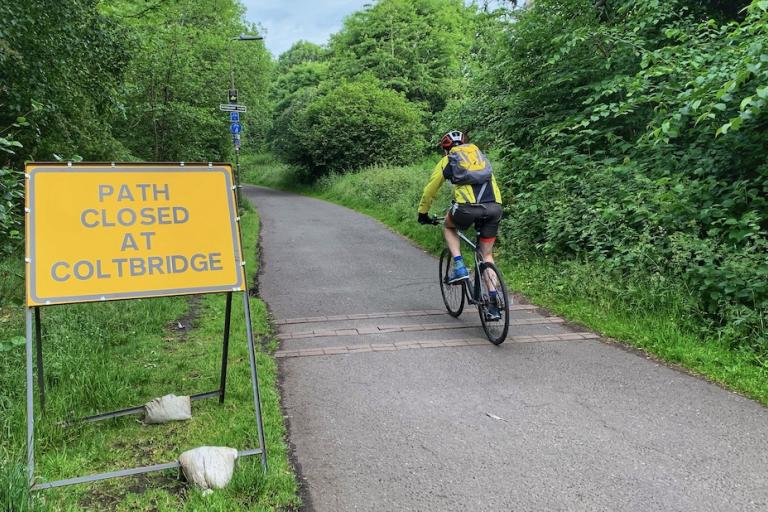
The Auld Active Travel Alliance? Not quite…
Thanks to road.cc reader Oldfatgit for neatly summing up the apparent growing chasm between those two great cities when it comes to active travel policy in the 2020s.
While Paris’ SUV ban has received widespread praise from cyclists on social media – including some knowingly futile calls for the UK to follow suit – other readers were similarly baffled by local decision making in Auld Reekie.
“Wow! Just when I thought we'd hit peak absurdity, Edinburgh council proves me wrong,” wrote eburtthebike.
“We’re going to reduce car trips by taking away cycling infrastructure, not we’re going to reduce car trips by taking away driving infrastructure.
“They should go away, make a cup of tea, sit down and read their own policies and then implement them.”
05 February 2024, 17:22
Ouch…
05 February 2024, 16:58
Things you only see at Ecuador’s national championships
This video broke me. Help, I need context.pic.twitter.com/DBackmD20d
— Cycling out of context (@OutOfCycling) February 4, 2024
Another one to add to the weird and wonderful list of cycling podium prizes…
05 February 2024, 16:32

Decathlon AG2R La Mondiale rider Franck Bonnamour provisionally suspended by UCI over “unexplained abnormalities” in biological passport
It doesn’t happen too often these days, but the biological passport alarm pinged this afternoon in the UCI offices, leading to the provisional suspension of Decathlon AG2R La Mondiale rider Franck Bonnamour, the first WorldTour rider to be snagged by the anti-doping measure for over a decade.
According to a statement released by cycling’s governing body this afternoon, 28-year-old Bonnamour – who won the most combative award at the 2021 Tour de France while riding for B&B Hotels, following a series of attacking displays – has been “has been provisionally suspended in accordance with the UCI Anti-Doping Rules due to unexplained abnormalities in his Biological Passport”.
The UCI said it will comment further while proceedings are ongoing.
The French rider, who joined AG2R last season and whose sole professional victory came at La Polynormande in 2022 (though he did just miss out on a big win at Paris-Tours the previous autumn), has already raced this season at the Tour Down Under, finishing 13th on stage two to Lobethal, but is now due an extended period sitting at home as the UCI gets to the bottom of what’s caused those unexplained spikes in his blood profile.
05 February 2024, 15:57

Plans afoot for more condensed UCI Cyclocross World Cup, as world champion Mathieu van der Poel raises doubts over future commitment to ‘cross calendar
The long, complex debate over the length and structure of the cyclocross season has arguably proved more intriguing than most of the racing this winter, dividing riders, prompting bizarre public outbursts from UCI presidents and disgraced former team bosses, and highlighting the inherent difficulties in growing a sport seemingly reliant on its multidiscipline stars.
But, with summer roadies like Mathieu van der Poel and Zoe Bäckstedt adding to their increasingly bulging collection of rainbow jerseys at the weekend, changes appear to be on their way in the world of cyclocross – thanks to the planned introduction of a condensed UCI World Cup calendar, designed to entice the MVDPs and WVAs of the world, who may otherwise not want to spend four cold, wintery months in a muddy field as they prepare for the Tour of Flanders.
According to reports in the Belgian media, Flanders Classics (the rights holder of the World Cup until 2018) is currently negotiating with the UCI over a new schedule that will mean the cyclocross’ premier competition – which runs from October to the end of January over 14 rounds – will take place entirely in December and January, and over 10 or 12 rounds.
> road.cc Podcast: Lucinda Brand and Eli Iserbyt on the future of cyclocross
The new calendar, which is set to be announced in the spring, will also ensure that World Cups do not fall on the same weekend as other major, traditionally important races (which potentially draw riders away from ‘foreign’ – in other words, non-Belgian or Dutch – World Cups), while aiming to expand cross’s global reach by including more far-flung races, such as the long-touted London event and, apparently, in other UK cities.
“The negotiations take a long time and that is normal. This is about the future of cyclocross,” Flanders Classics CEO Tomas van den Spiegel told HLN.
“The cyclist of the future is multidisciplinary. I’m not just talking about Van der Poel, Van Aert, and Pidcock. But also about Van Empel, Van Anrooij, Pieterse, Backstedt, and Thibau Nys. That is the next generation that emulates Mathieu, Wout and Tom.
“If you want to make cyclocross sustainable, we can no longer ask the riders to adapt to the calendar. Then it seems logical to me that the World Cup adapts to the rider of the future. We have to find a format that allows this type of riders to win the World Cup.
“Then we have to ensure that the World Cup is held in December and January, without wanting to touch the Christmas period. There are a number of historic races there, we should not want to thwart them. In the future it will still be possible to race cyclocross from September to the end of February. But in the big races it must be ensured that the best riders are at the start. This is also the case in other sports and for me that is the future of cyclocross.”
(Alex Whitehead/SWpix.com)
Meanwhile, the subject of the ‘cross calendar also came up in Mathieu van der Poel’s post-race interviews with the Dutch press, after the all-round superstar secured his sixth world cyclocross championships, moving him just one rainbow jersey shy of the all-time men’s record set by Erik De Vlaeminck.
And while Van der Poel remains intent on cementing his status as the best ‘crosser of all time by surpassing De Vlaeminck, the abuse he’s received by some fans during his startlingly dominant winter has forced him to weigh up his future in the discipline in which he made his name, at least when it comes to competing for any extended period of time during the road off-season.
“I think that is the only motivation to start racing again in the winter,” Van der Poel told WielerFlits of his desire to reach that seventh ‘cross world title.
“The rest of the season, as I've said before, isn't important. There is only one race that counts and that is the World Championship.
“Showing that I am the best is not something I am concerned with. I'm just working on that record. Everyone still talks about that De Vlaeminck record. That's something people just don't forget. Even many years after his career, people talk about it. So those are the things that matter and keep me busy.”
He continued: “Sometimes I wonder if it's worth it to have beer poured over you every race. “Although that shouldn't influence the decision too much. On the other hand, I can't just let it pass.
“I still enjoy cyclo-cross, it's something I really like to do. But it's not just the ‘cross. It's everything that comes with it. It takes a lot of energy.
“A day like that on the cross simply demands a lot from you. The racing is perhaps the easiest part of the day. My focus is also more and more on the road, that is where my big goals lie.”
05 February 2024, 15:29
Close Encounters of the Angry Motorist Kind, Episode 320
05 February 2024, 15:09

Bespoked handmade bike show back in the UK for 2024
In great news for bike nerds, like myself, up and down the country, Bespoked, the UK and Europe’s premier handmade bike show, is returning to British shores this summer after a year on the continent.
To the uninitiated, Bespoked tends to feature lots of superb craftsmanship, custom paint, lovely lugs, and Chris King headsets among the mostly independent makers, and a fine selection of one-off quirky bikes that you will certainly not find in Halfords.
It last took place in the UK in October 2022 at London’s Lee Valley Velopark, and will held for the first time this June at the iconic Victoria Baths in Manchester, so make sure to mark it in your diaries.
“Victoria Baths is an ideal venue for the show, with its glass roof, neutral palette, and ornate interiors,” Bespoked’s Peter Georgallo said in a statement today.
“Manchester is ideally situated at the centre of the UK geographically, with fantastic transport links and proximity to the Lake District and Peak District, which make up some of the finest riding in the UK.”
Registration for the event, which will take place between 28 and 30 June, is now open on Bespoked’s website.
05 February 2024, 14:31

Cycling: The new golf? Dan Martin predicts LIV Golf-style problems as Saudi Arabia’s Public Investment Fund emerges as frontrunner to back new cycling ‘super league’
Retired pro Dan Martin believes a new cycling super league, potentially funded by Saudi Arabia’s Public Investment Fund, could face the same problems recently encountered in golf, where the new money of the Saudi-backed LIV project butted heads against the “tradition” of the PGA Tour, resulting in a long and often tense battle between the two organisations.
Over the weekend, Reuters reported that a sports investment company owned by the PIF – Saudi Arabia’s sovereign wealth fund and the money behind the recent takeover of Newcastle United as well as LIV Golf – has emerged as the frontrunner to back the new One Cycling project, a cycling ‘super league’ led by Visma-Lease a Bike boss Richard Plugge which intends to counter pro cycling’s traditional “flawed” and stagnant business model and create “new revenue streams” for the sport.
The latest plans to revolutionise cycling include more circuit-based races, the creation of a “better-defined” racing calendar based on Formula One, and the mass marketing of the sport’s ‘charismatic’ (ahem) personalities.
(Alex Whitehead/SWpix.com)
And now Reuters says that, following a bidding process run on behalf of a select group of teams, SRJ Sports Investments (that’s pronounced ‘Surge’ apparently) has begun exclusive negotiations concerning a potential investment of around €250 million in the project.
However, talks are still ongoing, with Visma-Lease a Bike telling the agency that the investment is one of “many” ideas currently being explored with the aim of coming up “with a sustainable business model for cycling in the future”.
Meanwhile, only eight teams and none of the three grand tours are believed to be currently involved in the project, while other teams have reportedly expressed concern about the terms of a possible deal, including the risk of having to pay back funds if the league fails to generate enough revenue.
And another onlooker who isn’t entirely convinced by One Cycling and its aims is Dan Martin, the two-time monument winner and double Tour de France stage winner, who responded to the news of the PIF’s involvement in the league with some scepticism over the weekend.
“Struggling to understand how the teams will benefit from bringing big investors in to create a new League. Surely it’s the investors who will want to see the profits,” the retired Irish climber tweeted.
“A new cycling league will hit the same barriers as golf with LIV vs PGA. Money vs Tradition. Sure some will embrace it but cycling is rooted in history, riders dreaming of the monuments and Grand Tours, not a big paycheque.
“Also, realistically, although a lot of money, $250m does not buy a new sport. The Las Vegas F1 cost $500m for one race. They invested $2b in LIV golf and so far it’s struggling to take hold.”
Another one that could run and run… before eventually fizzling out and ending up in a decade’s time on one of those ‘Cycling Breakaway Leagues that failed miserably’ articles.
05 February 2024, 13:52
Something, something, cyclists, red lights, something…
DANGEROUS DRIVING IN CORK
Darren from Mullane School of Motoring sent us this shocking footage. Darren was conducting a lesson when a 'maniac' overtook them, almost hitting a cyclist, before breaking a red light at a busy junction.
Call: 0818 104 106
Text: 086 8 104 106 pic.twitter.com/2wig4cljPt— Neil Prendeville (@NeilRedFM) January 29, 2024
“Look at this f***ing eejit,” says Cork-based driving instructor Darren, in something of an understatement, as a “maniac” motorist overtakes him at speed through a busy town, narrowly avoiding an oncoming cyclist in the process, before close passing another cyclist and ploughing on through a red light.
But, but, but cyclists…
05 February 2024, 13:17
Do no-fly policies only act to make cycling events even more exclusionary?
Some obligatory lunchtime reading for you here courtesy once again of VecchioJo, who’s waded into the recent trend of ultra-distance cycling event organisers implementing no-fly rules for participants, an environmental policy – and logistical headache – he suggests is putting “principles over practicality”…
> The privilege of race: No-fly policies only act to make cycling events even more exclusionary
(We’re also planning to discuss potential no-fly policies and pro cycling’s environmental stance in detail on an upcoming episode of the podcast too, so watch out for that one over the next few weeks.)
05 February 2024, 12:54
Things you only see at the cyclocross (thankfully)
— Cycling out of context (@OutOfCycling) February 4, 2024
I really hope you didn’t need context for that particular homemade sign (because if you did, goodness knows where your mind wandered to in the process), but here it is anyway:
> Mathieu van der Poel spits at “booing” spectator on way to 7th straight win
05 February 2024, 12:34
Government falsely claimed it blocked low-traffic schemes, documents suggest
Documents obtained by a campaign group suggest that Transport Secretary Mark Harper and the government have not blocked councils from installing low-traffic neighbourhoods (LTNs), despite their claims.
The news comes after Transport Action Network (Tan), the campaign group currently taking legal action against the government over cuts to active travel budgets, got hold of documents which showed Active Travel England’s decision-making process regarding applications for funding from councils for low-traffic schemes.
And while in May of last year some newspapers and media figures were briefed that ministers had blocked money for LTNs, this claim that funding had been stripped or blocked is reportedly not seen in the papers, which instead revealed that the lack of funding approved for LTNs was in fact due to the schemes being deemed by Active Travel England to be not ambitious enough or of sufficient quality.
Read more: > Government falsely claimed it blocked low-traffic schemes, documents suggest
05 February 2024, 11:42
Liverpool supporters, look away now
Fresh from opening the scoring against title rivals Liverpool yesterday afternoon, Arsenal and England ‘starboy’ (urgh) Bukayo Saka has staked his claim for a spot on the wing in our high-flying Footballers Who Cycle XI…
> Footballers who cycle XI — the Premier League stars who love life on two wheels
Saka, Salah, or Robben? Now that’s what they call in football a nice problem to have.
Oh, and don’t worry, it didn’t take long for a Gooner to pop up in the comments calling for their No. 7 to “get a helmet on kid”…
05 February 2024, 10:48

Farewell Styby: Three-time cyclocross world champion and multidisciplinary star Zdeněk Štybar bows out of the sport on home soil, after “shedding tears” on emotional final lap
The dominant, relentless stars of the weekend’s world cyclocross championships in Tábor – Zoe Bäckstedt, Fem van Empel, and the era-defining Mathieu van der Poel – may represent the present and future of the sport, both on-road and off-road.
But it was one multidisciplined representative of cycling’s past who arguably received the most love and adulation from the fans who flocked to the historic Czech town and its heavy course yesterday.
Three-time cyclocross champion Zdeněk Štybar bowed out of the sport at his favoured discipline’s flagship event with an emotional final lap in his home country, in front of an adoring home crowd, and on the very course he won his first ‘cross rainbow jersey back in 2010.
A last lap crash aside – which the 38-year-old said allowed him to soak up the atmosphere during his final few minutes as a pro cyclist – final races don’t come much better, and more fitting, than that.
Štybar, who added to his maiden 2010 world title with two more rainbow jerseys in 2011 and 2014, also – rather fittingly, considering who dominated yesterday’s men’s race in Tábor – paved the way for a whole generation of multidisciplined talents, such as Van der Poel, Wout van Aert, and Tom Pidcock, joining Quick-Step in 2011 and combining his generational talent on the ‘cross field with some sterling results on the road.
Those road successes include stage wins at the Tour de France and Vuelta, classic victories at Strade Bianche, E3, and Omloop Het Nieuwsblad, a GC win at the 2013 Eneco Tour, and two near misses at Paris-Roubaix in 2017 and 2015.
(Alex Whitehead/SWpix.com)
“A lot of emotions. This was a very special week. Even after Christmas, let’s just say this was a farewell tour,” Štybar, who raced his last year on the road in 2023 for Jayco-AlUla, told HLN after yesterday’s race, which saw him finish 31st and later take to the podium to enjoy the adulation of the home crowd one last time.
“I crashed the last lap... On the one hand, I could enjoy it a little longer, but on the other hand, it was a shame because I just got my second wind and was able to continue.
“In fact, I was suddenly forced to really enjoy the spectators. That was incredible. I really shed tears on that last lap. Also, here on stage.
“I couldn’t have asked for a better farewell. Riders are always busy organising a farewell race... But here, all the Belgians and Czechs were present. I am very grateful for that.
“My career started and now ends here, with a huge number of people. I have a headache from all the shouting and from all the fans in the stands. That was incredible. A moment that I will never forget and for which I am grateful.”
Enjoy your retirement Styby, it’s well deserved.
05 February 2024, 10:20
Weekend round-up – Wait, Michael Owen’s the ambassador for what?
We’ll get to the cyclocross, and those utterly dominant displays in Tábor, in a minute or two, but here’s what else you may have missed while trying to keep up with all the bike races suddenly back on TV. And, you know, actually riding your bike…
> Six teens arrested after cyclists targeted in hit-and-run crashes in Melbourne
> Near Miss of the Day 890: Scaffolding truck driver makes very close pass on cyclist
> This crowdfunded carbon fibre e-bike apparently has Michael Owen on its "ambassador team"
Well, there’s no denying the former Liverpool, Manchester United, Real Madrid, and Newcastle poacher’s inherent charisma and electric personality…
After obtaining a PhD, lecturing, and hosting a history podcast at Queen’s University Belfast, Ryan joined road.cc in December 2021 and since then has kept the site’s readers and listeners informed and enthralled (well at least occasionally) on news, the live blog, and the road.cc Podcast. After boarding a wrong bus at the world championships and ruining a good pair of jeans at the cyclocross, he now serves as road.cc’s senior news writer. Before his foray into cycling journalism, he wallowed in the equally pitiless world of academia, where he wrote a book about Victorian politics and droned on about cycling and bikes to classes of bored students (while taking every chance he could get to talk about cycling in print or on the radio). He can be found riding his bike very slowly around the narrow, scenic country lanes of Co. Down.
Latest Comments
- HalfDanHalfBiscuit 2 hours 24 min ago
Per capita thefts isn't all that useful a metric as it doesn't take into account levels of bike ownership. Cambridge is probably the cycling...
- Critman 3 hours 50 min ago
"30mm outer diameter 18mm inner diameter 13.4mm". Good luck finding a skinny tire.
- Destroyer666 5 hours 18 min ago
Ahem, the recommended lockring is just a common through-axle specific lockring, so nothing Miche specific there, and the required tool for it is an...
- Destroyer666 6 hours 13 min ago
Nonono, not those, but those that have constructed Italian cars and motorcycles that have been driven to hundreds of race and championship...
- RoubaixCube 6 hours 22 min ago
This may well be the case although Im unaware of the brands popularity on their home turf. I used to see them being advertised more in the UK...
- qwerty360 6 hours 52 min ago
Arguably sticking it in a bank account is bad....
- Sredlums 7 hours 51 min ago
I'd counter that those brakes were in fact so inadequate that they eventually developed a whole new type of bicycle that was actually suited for it...
- levestane 7 hours 53 min ago
Unfortunately, Africa is heavily exploited both for resource extraction...
- CitizenSmith 8 hours 19 min ago
There seems to be no support for TOO) now - their email and website are defunct. They are inactive on Facebook. Aftter less than a year the rails...


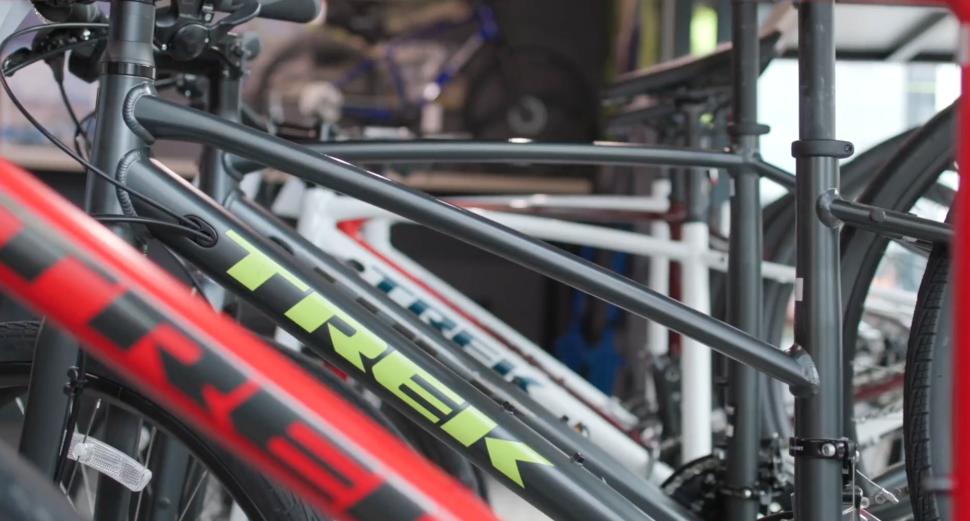

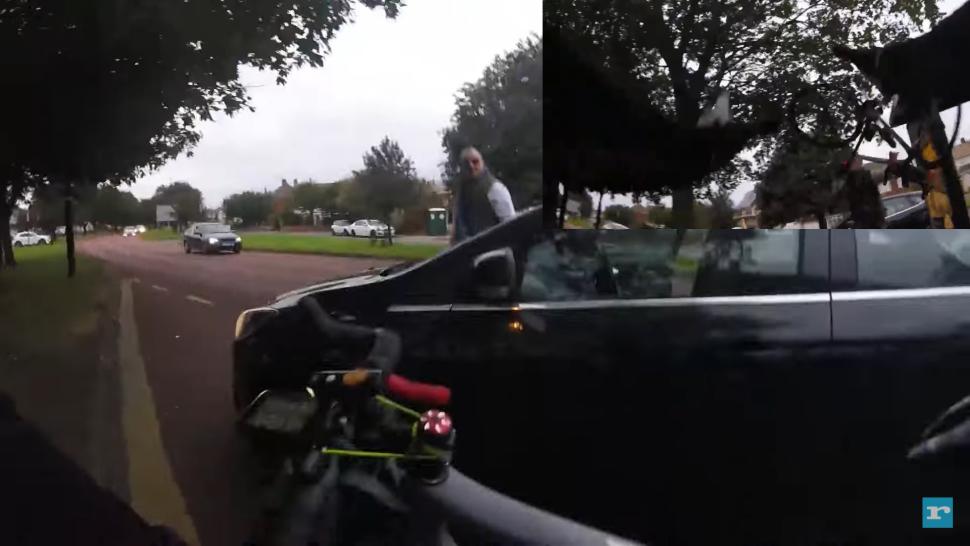

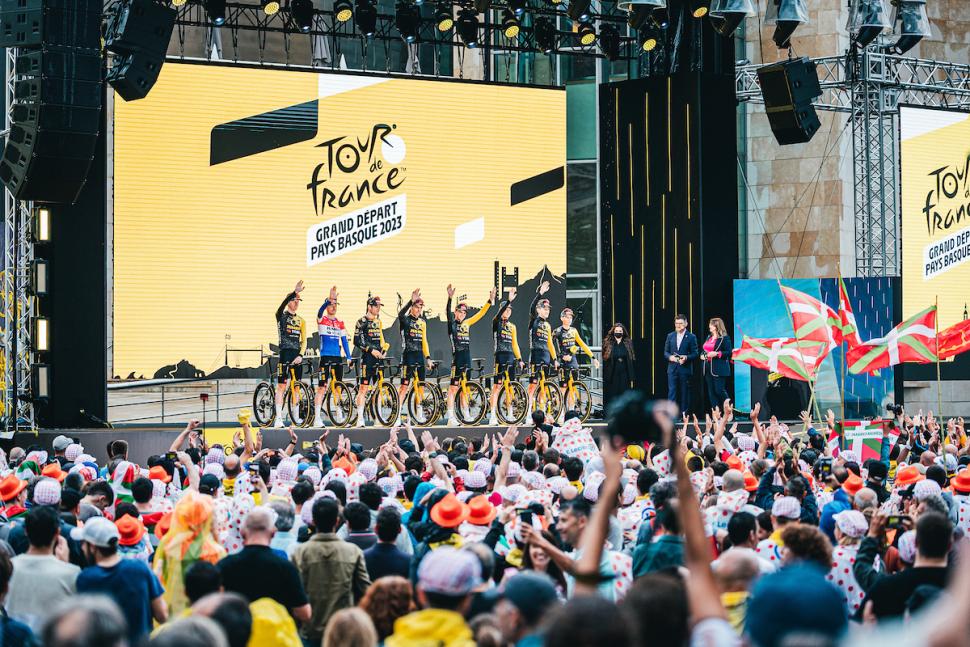
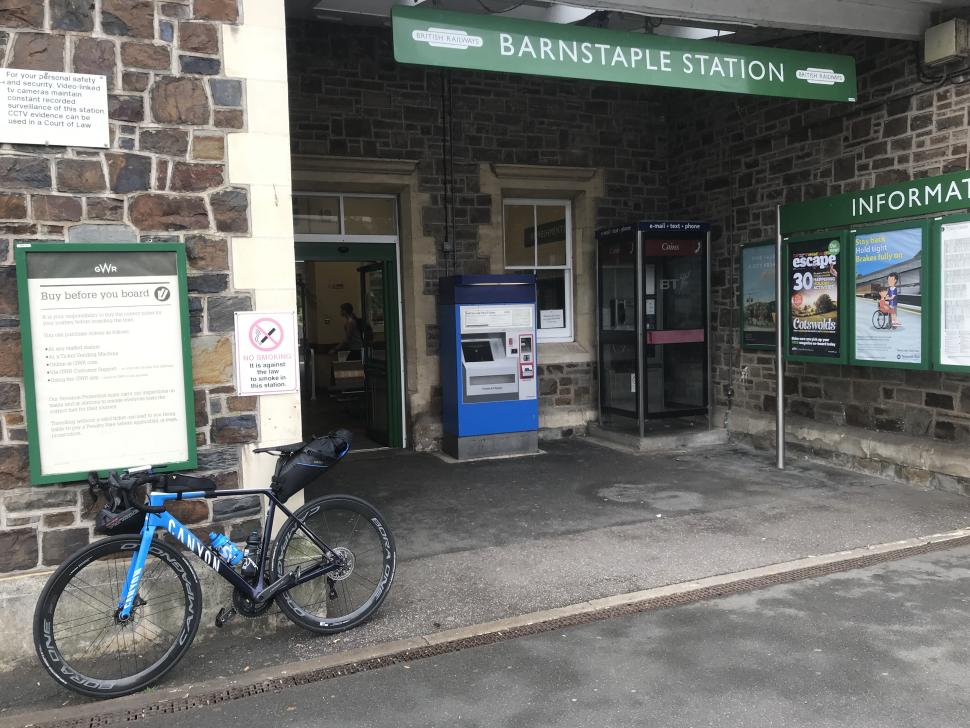
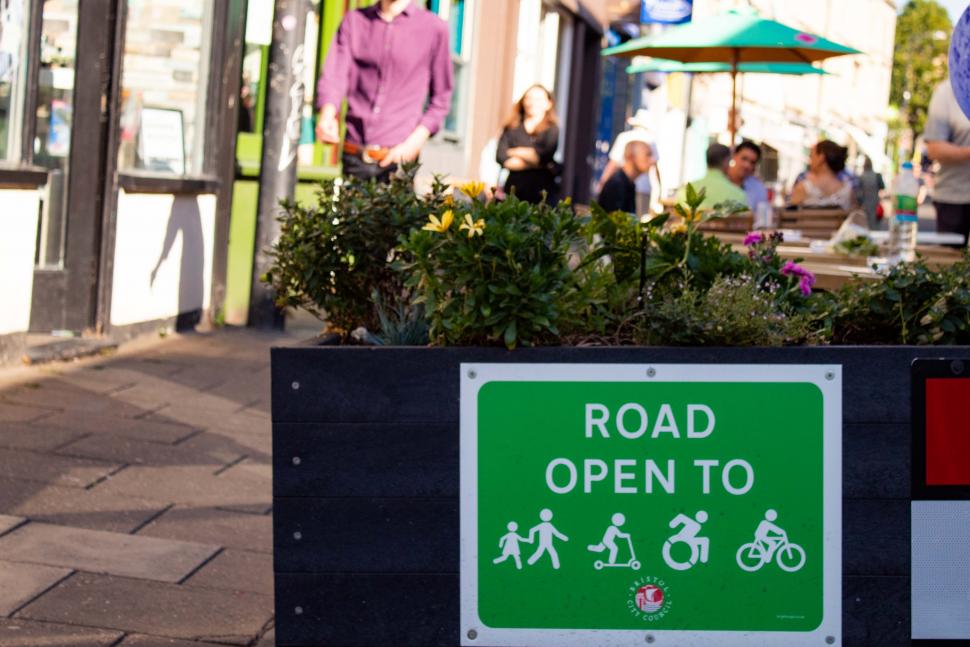

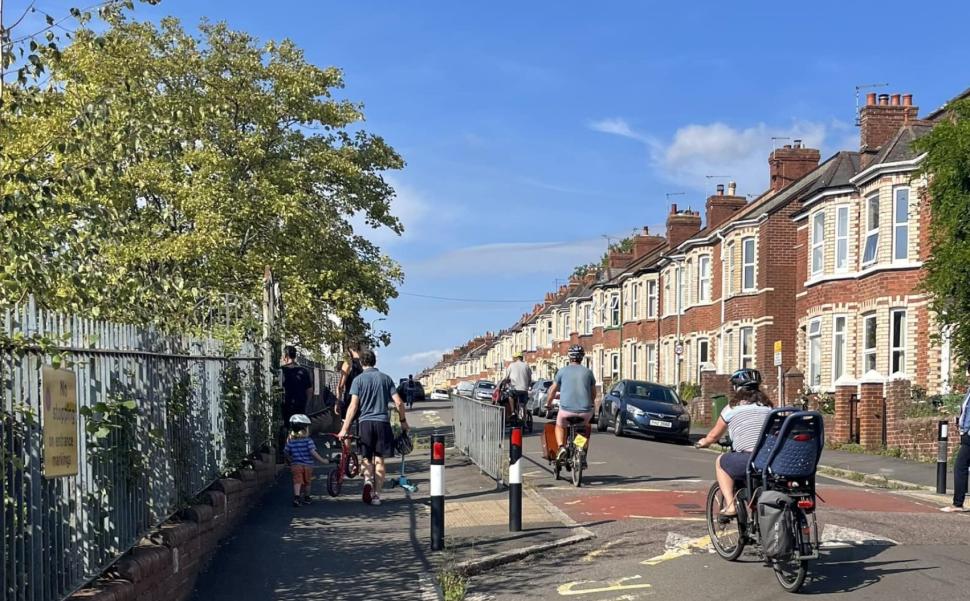


Add new comment
42 comments
Which in itself suggests the issue hasn't been turned into part of a culture war as it would be over here.
"we need our car to leave Paris during holidays and weekends."
Then you're already wasting 5/7ths of the purchase price, a few quid more shouldnt matter.
Thats before you get into the fact that you are buying or leasing a depreciating asset and its the biggest waste of money outside of renting a house/flat.
Wow! Just when I thought we'd hit peak absurdity, Edinburgh council proves me wrong. We're going to reduce car trips by taking away cycling infrastructure, not we're going to reduce car trips by taking away driving infrastructure.
They should go away, make a cup of tea, sit down and read their own policies and then implement them.
It gets worse - as the article says, City of Edinburgh Council is spending £12.5 million on the Roseburn to Union Canal link, to connect up probably Edinburgh's 2 major cycling (and other active travel) resources, namely the Union Canal path and the North Edinburgh Path Network (of which Roseburn path is the southern leg), thereby creating a much-needed safe off-road route between the two for the first time (and therefore between north and east Edinburgh, and south and west Edinburgh). That's just nearing completion.
In addition, CEC is spending £19.4 million on stage 1 of City Centre East to West Link (CCWEL), which provides a segregated path from Roseburn to the west side of the city centre. That's also nearing completion.
So what sense does it make to rip out 2km of the original path network to which these projects were linking to (and the linkages to which formed a major part of their business cases, if not the only stateable reason in the case of Roseburn to Union Canal) so the council can play train sets again? It's ludicrous.
Maybe because the whole tram thing was far less about joined up transport, or low carbon futures than it was a massive flag-wave for Edinburgh in "development" terms.
(Trying and likely failing to avoid what is less a rabbit hole more a county-sized warren...)
After the initial network idea rapidly got scaled back we were left with "the 22 bus on rails" as many said. I strongly suspect this had to do with "image". So "Set your business up in Edinburgh - we're building shiny new expensive infra! We're a modern city, you can get off the plane and smoothly tram into town" (The latter ignoring that the "smart money" will likely still take cabs / have motor transport organised).
Similar for the redevelopment of North West Edinburgh / Granton - probably to do with posters and things that businesses and developers can tout. Is everyone - or even many people - going to tram in, given there's effectively still one tram line (just with a fork in it)?
Another interesting point can be found in Cllr. Arthur's musings on previous projects. He seems to be saying "what we've learned is we need to disrupt people less and deliver quicker (and cheaper)". This is reasonable - but unfortunately they don't seem to have examined why there was so much time taken and disruption.
In the case of CCWEL it was the usual story of inadequate resources - not necessarily money but e.g. trained staff. Plus shouty opposition to cycling (or rather slight reduction in driving convenience and businesses saying "no-one will visit our shops!"). You could certainly do something about that (better resources for your active travel staff and by now they *must* have an idea of how to tackle the usual suspects...)
In the case of the trams as the report last year shows planning was nonsense from the start, from the highest level all the way down. The Council and then the tram company went beyond their own competence without sufficiently taking advice on board. Indeed they often defensively doubled down when challenged - and that repeatedly proved a bad choice even for themselves (e.g. in the courts for compensation).
Those are the lessons I'd draw on. However it looks like they're proposing to simply say "not again!". Naturally they want "least disruption" (to motorists and businesses) but that's leading them to simply use those "free spaces" e.g. the paths.
Of course, public transport and especially fixed-route trams and trains work much better in conjuction with cycling and wheeling, to widen "catchment zones" - especially when you've only got 1.5 lines...
I'm sure taking the tram elsewhere would be more costly and certainly more disruptive than building a cycle path. (And much, much more expensive than not building a cycle path but maybe adding more paint...) Presumably fixing it so you *could* have trams and walking and cycling in the same space would also be more expensive - although I've not seen the numbers on this (I think it's 2 "historic bridges" and a major road bridge which may need work.)
UPDATE - thanks to a lot of people making the effort it seems that the parameters of the consultation have been changed - people will now have more options to consider e.g. they won't just be presenting the "scrap cycling" route as a "this is what we're doing, any comments?" deal.
More here at Spokes.
Yes, definitely to increase capacity we need to remove the third option instead of one of the top two options, right?
(source: NACTO)
That figure is a useful presentation but we need to remember these are max capacities, not necessarily what you get.
While the top option is still seen as the easiest / most convenient one* it's unlikely that we will actually get numbers near the max capacity of the others. We have to push AND pull - make the top option less attractive (at least around where e.g. you put in a tram, some bike routes) AND take measures to encourage use of the more efficient modes.
In the case of buses you have to make sure cars don't hold them up (e.g. option 4 not 2). In the Edinburgh case this line will still go through the busy centre of town on the same line AFAIK - so that may form a bottleneck. (Granted - you might get to Haymarket station quicker from Granton).
* Of course there are many factors which keep us using cars for trips, especially once we have one.
Yeah those figures are off to the level of propaganda.
The Edinburgh tram comes every 7 minutes and has a total capacity of 250 people. That equates to 2100 p/hr. If we were only counting sitting passengers then it's capacity is lower than cars.
10,000 p/hr implies a tram every 90's which is not really feasible on anything but a fully grade separated route. That would normally be achieved with a tram tunnel through the centre of a city which carried multiple services which then spread out once they exit the tunnel.
If you actually have demand for 10,000 people on a single route then what you want is a metro.
I've not looked at these specifc options but I'm pretty sure than this a a leisure cycle path at the moment and not currently a high capacity piece of cycling infrastructure. Ergo it probably makes sense to put a railed vehicle back into this corridor and actually build a proper cycling network where people will use it.
Agree on the important differences between city rail options and picking the correct one for circumstance. However trams (if there were a network...) are very well suited for city transport in many ways. At-grade unlike underground systems, don't sever travel routes like surface rail. Because they operate on fixed lines they can be safer to mix with vulnerable road users than buses*.
As you note the key is limiting the possibilities for them to be slowed by motor traffic. They'll not be going through dense urban areas with lots of stops at 60mph anyway.
* this however requires careful design - something Edinburgh *actively* ignored because "cost" but as likely "started so are just doing it regardless".
This path is very much used for transport as well as leisure use (local campaign group Spokes and also Sustrans do counts and surveys). It is definitely used!
It is a backbone route (we also need more routes which "go to the places the cars bite go" but every network needs "distributor" or connector routes). It is valuable as both recreation and transport. Breaking it would cut off *3* routes (and two new ones CCWEL and Roseburn to canal which is still being built!). It would sever active travel provision to the North and West. That's a major step back.
It links the North west of the city to the centre (and there are clearly some hardy commuters trucking 10 miles or more ). Locally it links poorer areas (Pilton, Drylaw) and ones in development to shops (Craigleith), rail (Haymarket) and city centre - plus as mentioned connecting 2 new routes.
It is a natural choice to revive these former lines for rail. However I don't believe there is a good case for doing this at the *expense* of a backbone of the active travel network. Yes - network! It's rubbish compared to NL but just about functional and better than most of the UK).
Hoping we can find a solution which maintains this while not stopping the council providing trams. If only they could do this "at pace" - and at the expense of private motoring. Alas it seems we're still too soon to really walk the walk as well as talking the talk.
Pages